Setting the Table
Curated together with Abel Hartooni and Sjoerd Beijers
Who gets to sit at the table? Who sets it, and who clears it away? The table has long been a place where decisions are made, where food is shared, and where stories unfold. Yet access to this space has never been equal. Setting the Table begins from this ambivalence, proposing the table not as a static piece of furniture but as an infrastructure for relation, an object that can include, exclude, or be reimagined as a tool for commoning.
Alongside the Western dining table and its histories of hierarchy and privilege, the programme turns to the Sufra—a piece of cloth laid on the floor for communal meals, practiced in different forms from the Balkans to Bengal and beyond. Unlike the rigid formality of the dining table, the Sufra suggests a sense of horizontality, flexibility, and communality that is both practical and symbolic. It is not solely spread for eating, but has become tied to spiritual, ceremonial and magical practices. Here, the Sufra becomes not only a surface where food and stories are shared, but a shifting landscape of encounters, celebrating differences and gaps. It extends beyond its material form into an infrastructure for relation, exchange, and imagination.
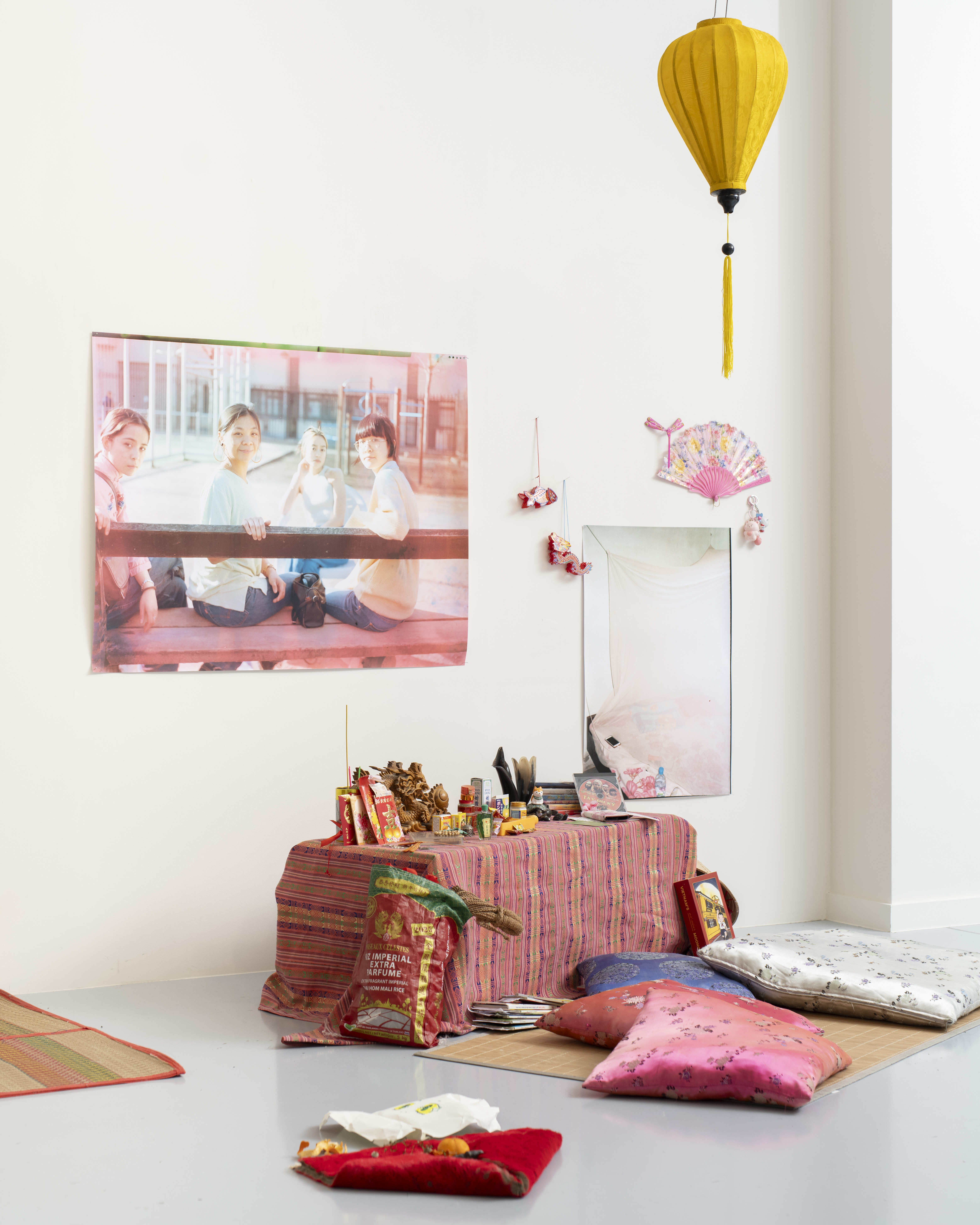
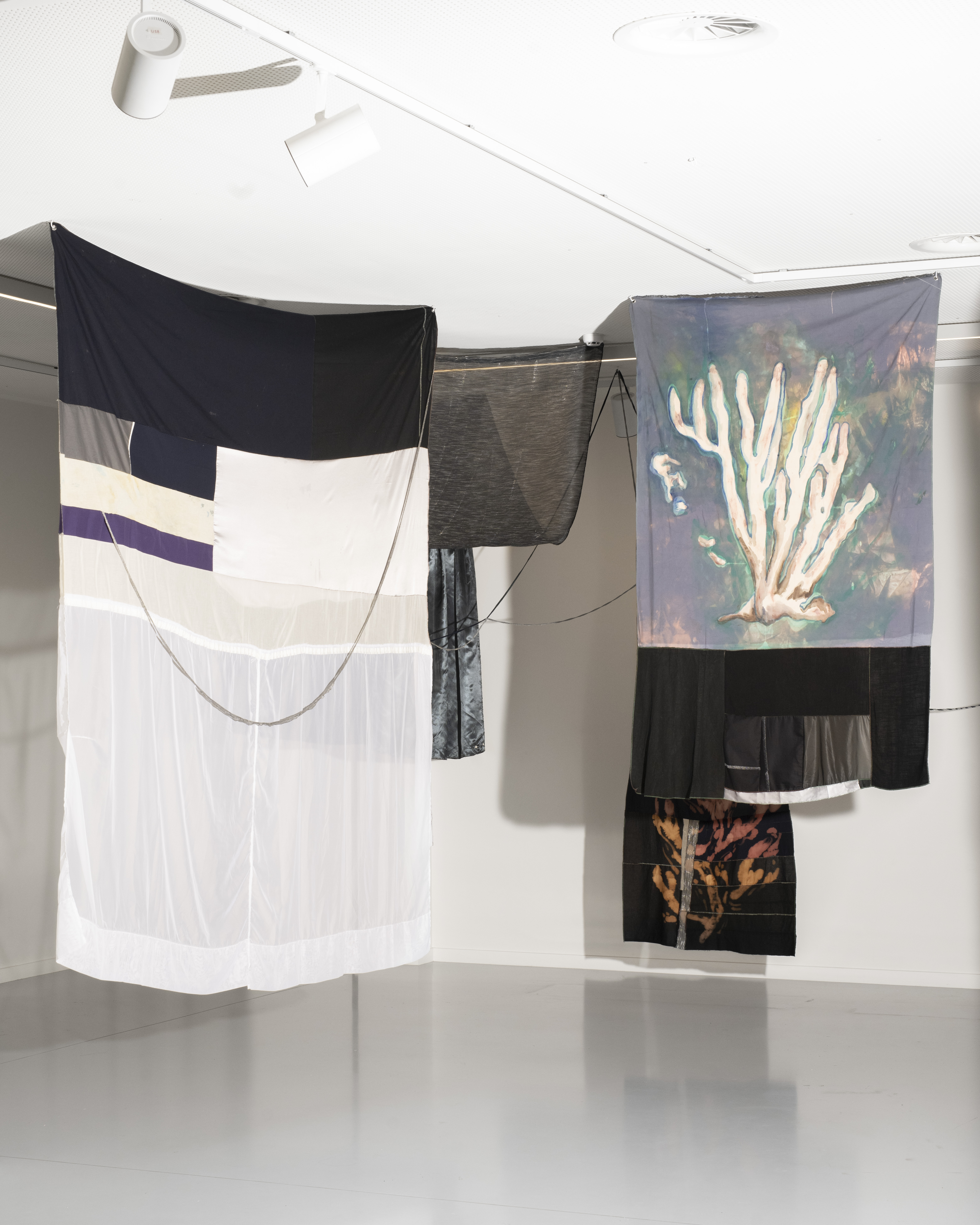
The invited collectives and artists engage with this through their own practices of archiving, storytelling, and making. Tashattot’s film POPG CLANC revisits a WhatsApp group first created by online gamers, which transformed during the compounded crises of Lebanon into something much more: a revolutionary cell, an information hub, a mutual aid network, and an emotional lifeline. The film is an act of collective archiving, but also of collective self-reflection, raising questions about how solidarity forms, how it sustains itself, and how it falters under pressure.
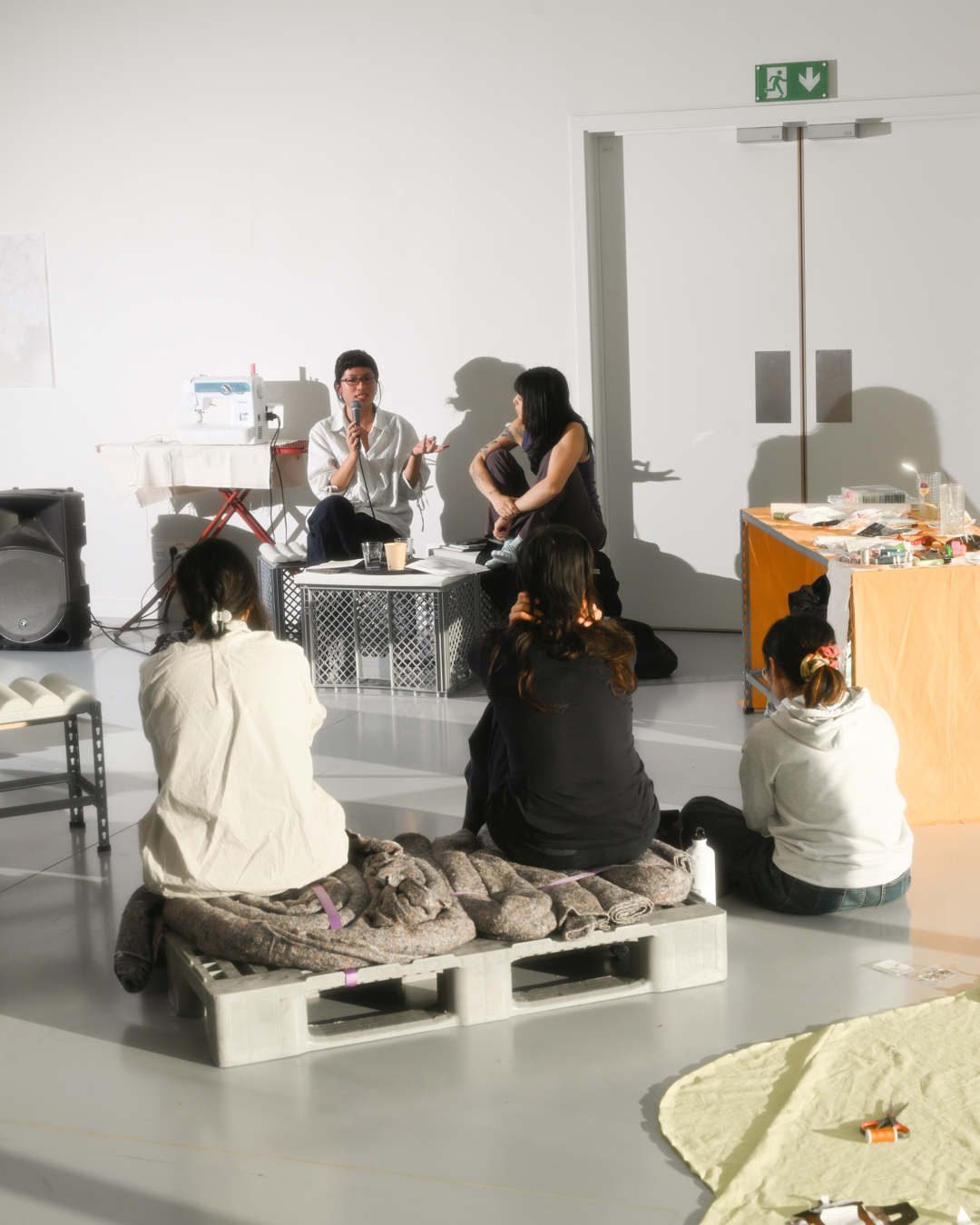


This dispersed and unstable form of collectivity resonates with Pushing Hands, who bring together mapping archives, video, photography, textiles, and food in a collective installation. Their work invites audiences to handle documents, leaf through memories, share mantou buns, or witness carpets unfolding across the floor. Each gesture foregrounds relationality—less about finished objects, more about traces of encounters, processes of gathering, and the care embedded in collective work.
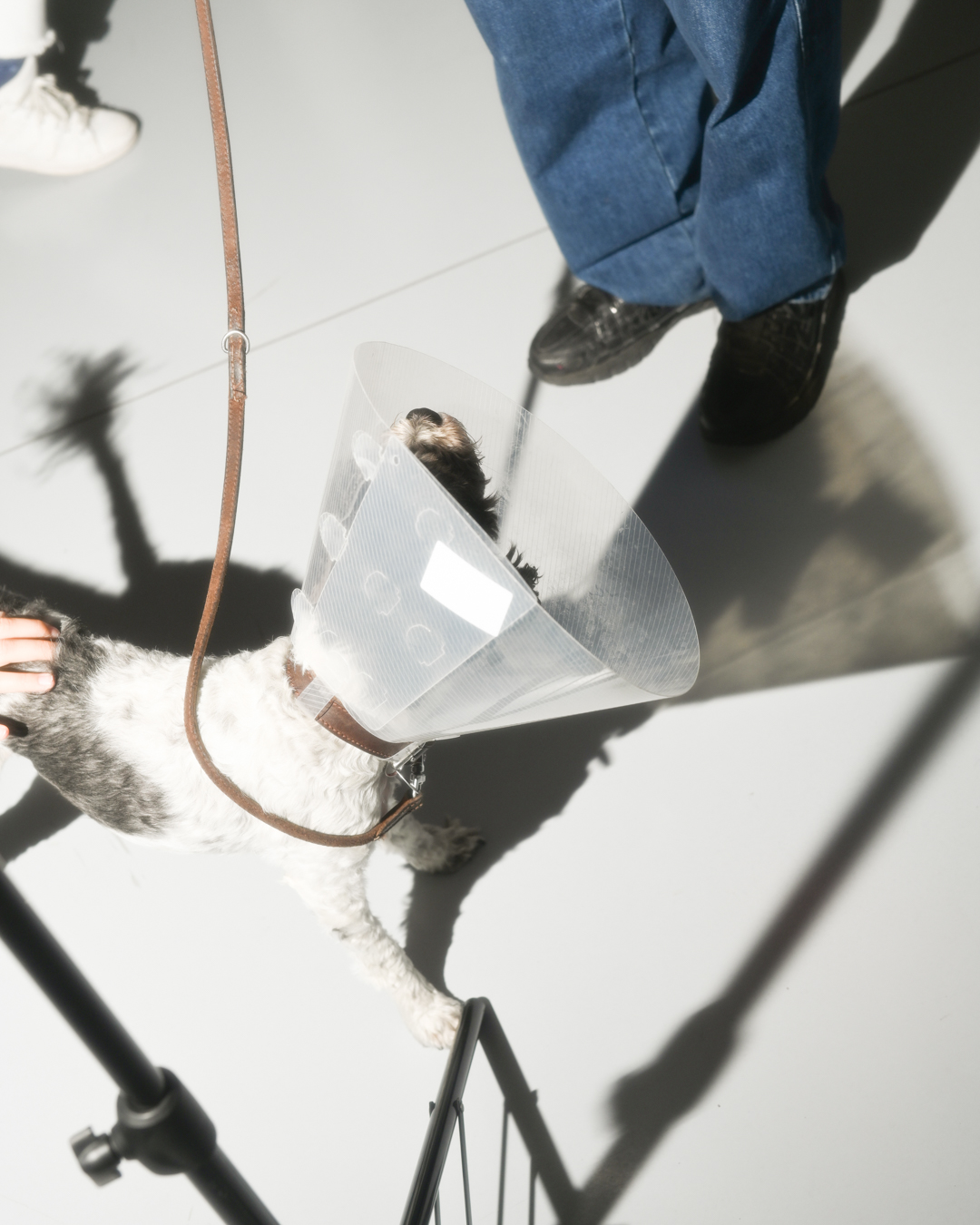
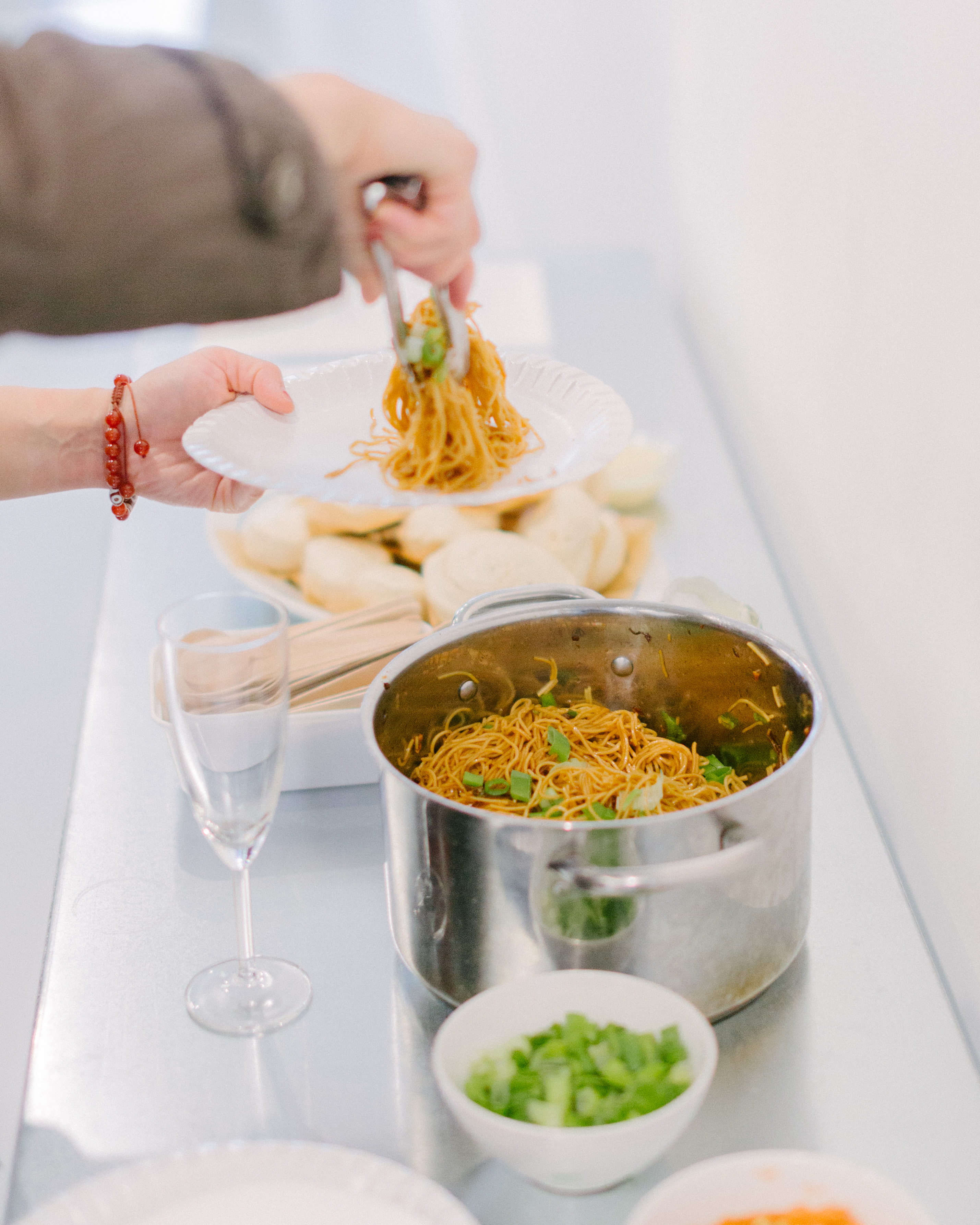

Lou Cocody-Valentino extends this sensibility through woven assemblages of recycled plastics, printed fabrics, painted wood, and yarns. Drawing on her upbringing in Martinique and her experience of living across multiple cultural geographies, she creates intimate material compositions that resemble poetic archipelagos—fragmented yet connected, echoing themes of memory and identity.
Shif–t* proposes a modular design that can be reconfigured and activated in different gatherings. Rooted in kinship and transformation, their practice envisions forms that stay open to change, echoing Ursula K. Le Guin’s gesture of “shif” as a space of flux and relation. Their contribution acts as a framework for communal presence—flexible, responsive, and polyphonic.


What ties these works together is not a single object but a multiplicity of gatherings—laid out on cloth, embedded in digital platforms, stretched across textiles, activated through food. Each expands the question of how we meet one another, how we share, and how we sustain a common space while holding space for difference. As Édouard Glissant reminds us, relation is not about assimilation but about allowing opacity to exist between us.
Photography credits go to Marit Galle, Clair Bravo & Johan Poezevara